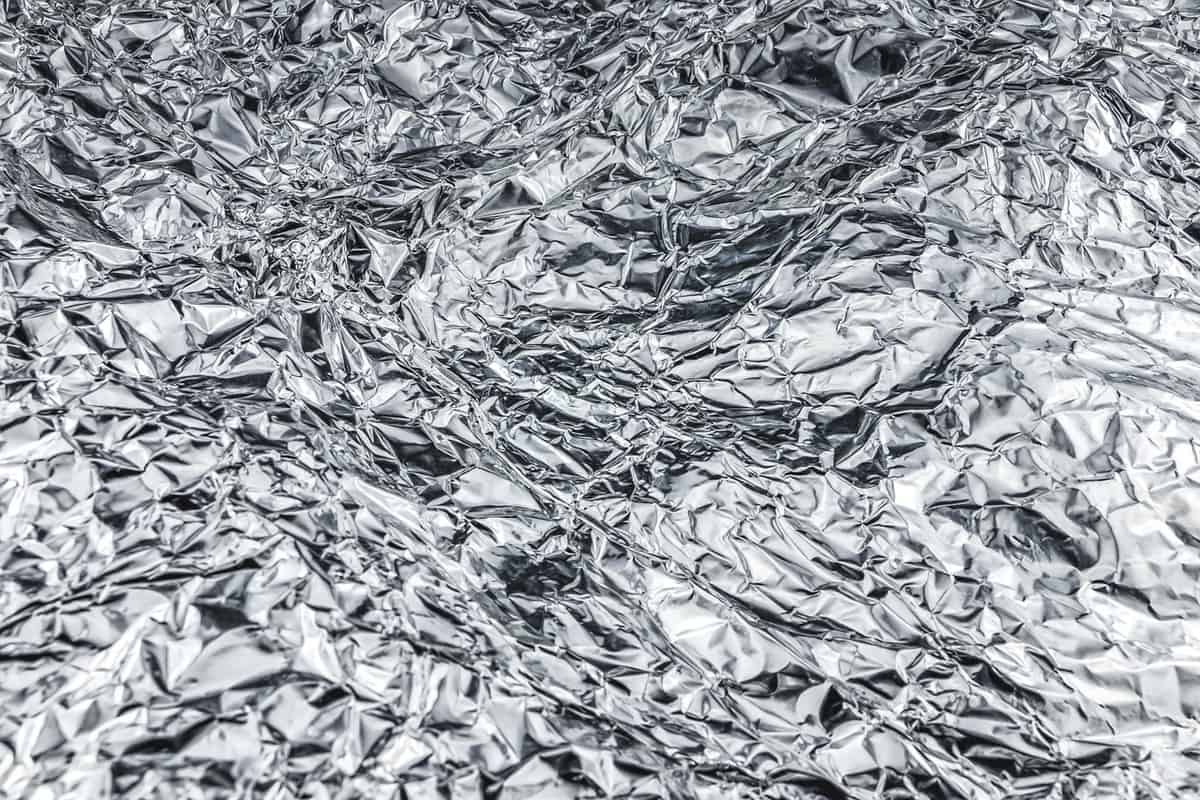If you’re anything like us, you’ve asked yourself this question at some point – does aluminum foil (also known as tin foil) burn?
The melting point of aluminum foil is 1220°F (that’s 660°C), and its ignition temperature is even higher than that. No home oven, stove or any kind of home heat appliance can reach temperatures that high.
So, you don’t need to worry about the aluminum foil catching fire next time you’re grilling or making lasagna!
What Temperature Does Aluminum Foil Melt At?
It takes a temperature of 1220°F to melt aluminum. That’s a number only reached inside hardcore industrial furnaces. It takes even higher temperatures to turn the aluminum into gas in order for it to catch fire. That means that you don’t have to worry about aluminum foil as a fire hazard.
Aluminum foil is safe (fire-wise) to use for cooking food using regular ovens and stoves.
That doesn’t apply to microwaves. Aluminum put inside a microwave oven will heat up quickly enough to ignite. That’s how thin metal reacts to the electric fields in microwaves.
Definitely do not place any kind of metal inside a microwave oven, even thicker ones. Even if the metal doesn’t catch fire itself, the microwaves bounce off of it causing sparks that will start a fire or at least damage the machine.
What Is Aluminum Foil Made Of?
Aluminum is the most abundant metal on earth. After oxygen and silicon, it comes as the third most plentiful element in the earth’s crust.
In nature, aluminum is mostly found in the form of bauxite. Bauxite is an ore composed of pure aluminum mixed with other impurities. Pure aluminum is extracted from purified bauxite through a process called electrolysis.
Aluminum foil is made from purified aluminum. The latter goes through a process of melting and casting to produce foil stock. This stock passes through metal rolls over and over until getting to the desired thickness. This process is made easier using lubricants and heat treatment.
How thick is aluminum foil usually?
The thickness of aluminum foil is measured in mils (one thousandth of an inch). Household foil usually comes in two standard thickness measurements, 0.63 mils and 0.94 mils.
After bringing the foil sheets to the desired thickness, they are trimmed and peforated to produce rectangular pieces. These pieces are then made into rolls of various sizes.
Is Aluminum Flammable?
While it would be a very satisfying sight, molten aluminum isn’t something you can make at home. You will need an industrial furnace for that. Shaping aluminum requires that it be melted in the process.
If subjected to extremely high temperatures, aluminum will eventually ignite (like most materials). That doesn’t make it flammable in the sense that it will ignite easily in ambient air, nor is it combustible.
Combustibility is flammability that takes a little more effort.
The non-flammability of aluminum solid and liquid is due to the presence of a natural protective layer over it. This layer – composed of aluminum oxide – keeps it from interacting with air oxygen.
Aluminum powder in contrast is highly flammable like most metallic powders.
Is Aluminum Foil Toxic When Burning?
While it is extremely hard to set aluminum foil on fire, aluminum powder is quite flammable. Exposure to aluminum fumes causes metal fume fever with flu-like symptoms. These symptoms go away within 1-2 days.
Since this is more likely to happen in the workplace, protective measures are necessary to avoid this type of hazard. Wearing respirators and protective clothing, for example, is imperative.
What Side of Aluminum Foil Should Touch The Food?

Aluminum foil is used when grilling or baking for its heat-reflecting properties. The foil conducts radiant heat without reaching extremely high temperatures. This allows the food to cook properly without burning.
To do this, cover the food entirely or in part when grilling or baking. Since aluminum has two sides–a dull side and a shiny one–there’s a debate on which side of the foil should touch the food.
It is commonly believed that the shiny side is more reflective. It makes sense to think that if facing outward, it will reflect the heat waves back. By the same token, if the shiny side is facing inward the waves will be trapped inside. This is why the shiny side is supposedly the one that should be touching the food.
Some say that the debate is irrelevant. They back that up saying that the heat produced by radiation is only a small fraction of the total heat responsible for cooking the food. Most of that heat actually comes from convection. The extra reflectivity of the shiny side has no effect on convection heat.
Does Aluminum Foil Reflect Heat?
There’s three ways through which heat is transmitted:
- Conduction
- Convection
- Radiation
Aluminum foil–being a shiny metallic surface–only reflects (stops) the radiation heat waves. In regular ovens and grills, the heat is mainly transmitted through convection and conduction. Therefore, no, aluminum foil does not reflect heat.
To Wrap Up
Aluminum foil is a necessity in the kitchen, everyone knows that. Now you also know that it’s completely safe and won’t burn – hurray!
Here’s a bullet-point summary for you to go back to when you need it:
- Aluminum foil isn’t a fire hazard, you’re safe to place it close to your grill.
- Don’t worry too much about which side should touch the food.
- Aluminum is quite toxic when burning, but it’s not at all likely that you’ll be exposed to that at home.
- If you want to melt aluminum, you need a furnace that heats up to at least 1220°F.
- Aluminum only reflects the heat coming from radiation. It’s safe to use in a grill or oven.
- Aluminum foil is not safe to use in microwaves.
Hi, I’m Adam and I’m a HUGE fan of Food and Cooking.
Do you enjoy grilling sessions with your family while staring at the beautiful fire pit flames?
Flame Gorilla is the site to learn how to have that perfect backyard experience.

